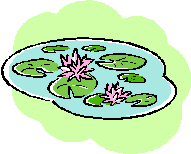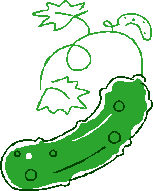

To send a message to an author, click on the author's name at the end of the article.
This Month in Ag Connection | Ag Connection - Other Issues Online
Improving existing ponds can enhance their value and extend their useful life. Improvements can increase water supply, provide multipurpose use, make property more valuable and improve water quality. New pond construction is expensive because often the best site is not available and construction costs continue to rise. Improvements are usually cheaper, perhaps much cheaper, than building a new pond so it makes good sense to protect and improve the existing pond.

Fencing the embankment and emergency spillway is usually the most important improvement which can be made. Livestock tramp down protective vegetation and expose the dam and spillway to erosion. If not repaired, this is likely to lead to failure and loss of the pond resource.
Preferably the entire pond area should be fenced as this insures livestock will not be lost to drowning and additionally improves water quality and provides opportunities for multiple uses such as fish and wildlife habitat recreation, or water supply. A tank below the pond or fenced access at the upper end provide excellent water supply for livestock.
For adequate water carry over during drought periods, ponds should be at least 8 feet deep at the deepest point. Some ponds may lack adequate depth for a reliable supply for more than a few months during extended dry periods.
Some older ponds lack enough storage capacity for present needs. Water use on farms and ranches has increased along with water use in other areas. Enlarging the storage capacity usually by enlarging the dam is a practical way to eliminate the problem of inadequate capacity.
Three options are available for increasing the pond depth.
Enlargement of the existing embankment usually will provide much cheaper additional storage. However, very often the pond resulting from an enlarged dam will have a very large surface area and a considerable height must be added for the required depth. The greatly increased storage requires more runoff so be sure there is adequate watershed. Also, the enlarged dam must have a new spillway at a higher level. The embankment and spillway must be protected by reseeding a grass as for a new dam.
If a suitable site is available, relocation has several advantages. A new structure can be located and built for new purposes and the old pond site can be converted to another use. The new structure allows easy incorporation of an outlet tube and stock water pipe for uses presently needed. A new structure is often the cheapest storage volume available.
Sometimes the only feasible way to increase the pond depth is to remove sediment from the pond. In this case, the pond is drained, pumped or siphoned out and allowed to dry for a few weeks. If the pond can be dry for an extended period, a bulldozer or scraper may be used to remove the deposits. A dragline is often used to remove the sediment deposits that are not dry.
Another somewhat less expensive possibility is to use a small floating dredge to loosen and pump out silt when the pond is full. Sediment removal is usually expensive for the storage created but may, in fact, be the cheapest for the depth created.
Ponds which receive sediment from cultivated field or upstream erosion will suffer a premature death. Sediment results in poor water quality and renders a pond unsuitable for many uses.
Possible measures may include new or upgraded terraces and terrace outlets, contour farming, crop rotations, reduced tillage, residue management, and improvement of vegetative cover. These options should all help in keeping the soil on the field and out of the pond.
Another simple device is a sediment pool at the pond's inlet to trap most of the sediment rather than have it carried to the pond's deepest portion. This requires a sizeable sediment basin so velocity is reduced sufficiently to release the sediment load. Grass filtration strips on flat slopes may also be used to slow the water and allow the silt to be deposited before the water enters into the pond. Silt from either the sediment pool or the grass filtration areas must be removed periodically. Removal involves small quantities and usually physically picking it up. The cost for such maintenance is likely to be fairly high.
Poor water quality due to excessive algae or aquatic weeds, turbidity (muddy color) or livestock wastes reduces a pond's value for many uses. Measures to help improve water quality include chemicals, mechanical or grass carp for vegetation control, addition of flocculating agents to remove turbidity and removing livestock from the pond vicinity. These problems may require repeated management for best results. But, if the pond is used for recreation or domestic water these measures will certainly warrant the efforts.
Contamination from livestock is controlled by fencing the pond and placing a tank below the pond. When livestock feeding facilities are located above the pond, a lagoon to catch the runoff water and keep it out of the pond will control pollution.
Excessive algae or aquatic weeds can be controlled by mechanical removal or chemical controls. Mechanical removal is seldom practical for ponds. Copper sulfate or other chemicals are often used to kill the weeds and algae. The dosage required to control weeds and algae depends on the species to be controlled, water temperature, water hardness, and the volume of water to be treated. See Texas A&M - Aquaplant website - http://aquaplant.tamu.edu/
Highly colored water from clay and organic material can be removed by a treatment with gypsum. This treatment causes the particles to flocculate and settle to the bottom which clears the water. A dose of 12 lbs. of 100% pure, finely ground (less than 0.3 mm) gypsum per 1000 cubic feet of water or 525 lbs per acre foot is recommended. For large ponds, the gypsum should be distributed over the surface and may be mixed with a small motor boat. This treatment procedure will improve water quality for domestic, livestock, and recreational uses. If the pond has considerable flow through, then frequent treatment may be required. The storage volume of a pond might be obtained from the NRCS office if they did the design. If not, the volume of water in ponds can be estimated. The volume of water is often expressed in units called "acre-feet." An acre-foot represents one surface acre that is one foot deep. To calculate the acre-feet of water in a pond, you'll need the surface area in acres as calculated above and an average depth of water in the pond. For a typical bowl-shaped pond the average depth can be estimated as 0.4 times the maximum depth. So, a pond with a maximum depth of 12 feet would have an average depth of about 4.8 feet.
Vegetation at the pond's edge can be a source of problems. Shallow pond area edges promote aquatic vegetation, insects and animals. Vegetation such as willow or cottonwood trees increase pond water losses to evaporation and may degrade water quality. However, some vegetation at the pond edge can be a benefit for wildlife so consider the alternatives before making changes.
Reshaping the pond bank to a steep slope at the waters edge and increasing water depth helps correct the problem. This is achieved by excavating the pond bank away from the edge and placing the fill in the shallow water area. This pond improvement will decrease pond evaporation and discourage insects and animals.
Source: Kent Shannon, MU Extension Natural Resource Engineering Specialist
This Month in Ag Connection | Ag Connection - Other Issues Online
As reported in last month's Ag Connection, the HiringIncentives to Restore Employment act (HIRE) contains tax provisions which will make 2010 another buyingopportunity year for business equipment. New purchases frequently involve getting rid of an older piece ofequipment. Given the current levels of the deductionavailable under the Section 179 expensing election, you may want to give consideration to how you structure your next purchase.

As a reminder, the HIRE act extends the Section 179 capital asset expensing at the $250,000 maximum deduction level for 2010. Additionally, remember that qualifying assets for Section 179 can be new or used.
The real issue for this discussion is whether to trade-in the old equipment on the new equipment or sell the oldequipment and purchase the new equipment without atrade-in. Historically, most farmers havetraded-in their old equipment. However, the current levels of the Section 179 deduction may make it financially attractive for you to sell the old equipment and purchase the new without a trade-in.
An example may be helpful. A dealer has a new tractor you want with a price of $150,000. Additionally you have a tractor purchased a few years ago that is now worth $50,000, but has a remaining tax basis of only $10,000 because of a prior Section 179 deduction and depreciation.
If you trade-in the old tractor for $50,000 and pay $100,000 boot, your tax basis in the new tractor is $110,000 (the $10,000 basis of the old tractor plus $100,000 boot). The $110,000 is eligible for the Section 179 deduction.
On the other hand if you sell the old tractor for $50,000 you will have a $40,000 gain and pay the dealer $150,000 for the newtractor. This structuring of the transaction results in $150,000 being eligible for the Section 179 deduction and a gain on the sale of $40,000. You are probably thinking that this sounds like six of one compared to a half-dozen of the other.
The difference is the latter transaction results in $40,000 less income subject to self-employment taxes and at roughly 13% net self-employment tax, that's a saving ofapproximately $5,200. This is the reason many people are reconsidering the way they will structure future business equipment purchases.
Source: Parman R. Green, MU Extension Ag Business Mgmt. Specialist
This Month in Ag Connection | Ag Connection - Other Issues Online
It is hard to believe something so small can and has killed range chickens in Missouri and other states this spring. They bite and suck blood, but the deaths are attributed to their extreme abundance suffocating fowl as they clog nostrils and trachea.
The Veterinary Diagnostic Laboratory of the Missouri Department of Agriculture has received reoccurring reports of a buffalo gnat like insect aggravating chickens. In one case, 3 dead growing chickens were submitted to the Diagnostic Laboratory and insects were found in the crop of all three birds. One bird had some these insects within its trachea. Samples of these insects were sent to our entomology lab and USDA for identification.

Recent news stories from other states reinforce these findings and suggest we may be getting off easy. They are most common in the spring, so the beginning of summer usually means a decrease in annoyance.
Also know as black flies or turkey gnats, they are dark colored small flies with a humpbacked appearance giving them our common name of buffalo gnat. For anyonegrowing up or visiting certain parts of the northern US at certain times of the year, the name black fly may have more meaning. They more common there and are known asvicious biters of people causing swelling at the bite site and even bleeding.
Buffalo gnat larvae are found in streams. They prefer moving water unlike immature mosquitoes which need still or stagnant water. Our last two years of high rainfall have most likely caused this dramatic increase. Moving water means control of the larvae is not feasible.
Buffalo gnats have many potential breeding sites and may fly 5-10 miles from their breeding stream. Fogging for them is not helpful and is least effective during the day. They are day fliers also unlike many mosquitoes. Common recommendations are to keep poultry or livestock inside (they prefer to bite outdoors) well-ventilated buildings (a breeze deters flies who like still air) during peak biting times (day/early evening).
Sources: Dr. Dan Shaw and Rose Foster of Missouri Department of Agriculture Veterinary Diagnostic Laboratory, Jesse Lyons, MU Animal Sciences - Poultry, Dr. Richard Houseman, Entomologist in our MU Division of Plant Sciences and Jim Jarman, MU Extension Agronomy Specialist.
This Month in Ag Connection | Ag Connection - Other Issues Online
Commercial vegetable growers enjoy more options to control vegetable pests than home gardeners. Cucumber beetles & squash bugs are two of the most challenging pests for control on cucumbers, melons, squash, & pumpkins, collectively referred to as 'cucurbit vegetables'. Two popular insecticides used by commercial growers for a number of years are now available to home gardeners.

Bayer Advanced Fruit, Citrus, & Vegetable Insect Control is a product applied as a soil drench to the rooting area of the vegetable where insect pest control is desired (the label has complete instructions; active ingredient is imidacloprid). Itprovides excellent control of cucumber beetles for between 3 & 4 wks. Control of squash bugs by this product, incommercial vegetable production, is not considered highly effective, but a general observation is that squash bugs don't seem to be around that much after its use. However, cucumber beetles will often be found after its use- either dead orsluggish. Cautionary note, this product has a much larger restriction on how long to wait to harvest a vegetable aftertreatment then most gardeners are used to- a minimum of 21 days on cucurbits and it should only be used one time per year, on a given vegetable planting.
Ortho Max Lawn & Garden Insect Killer is applied to the plants foliage (the label has complete instructions; activeingredient is bifenthrin). It provides excellent control of 'tough to kill pests' like squash bugs & stink bugs. Apply as soon as you see squash bugs. It has good residual activity and should protect against any of the nymphs that hatch out even if an adult female has succeeded in laying eggs. Hopefully, you will only need to apply it once. One can re-apply as quickly as 7 days if pest pressure resumes. One needs to wait at least 3 days to harvest cucurbit vegetables after using it. The Ortho product label also claims control of squash vine borer. This insect pest often affects Missouri cucurbit plantings, especially zucchini, pumpkins and most winter squash (butternut squash is considered resistant) . Controlling these three pests makes cucurbit gardening successful much more likely.
Source: James Quinn, MU Extension Horticulture Specialist
This Month in Ag Connection | Ag Connection - Other Issues Online
Publishing Information
Ag Connection is published monthly for Northeast and Central areas of Missouri producers and is supported by the University of Missouri Extension, the Missouri Agricultural Experiment Station, and the MU College of Agriculture, Food and Natural Resources. Managing Editor: Mary Sobba.